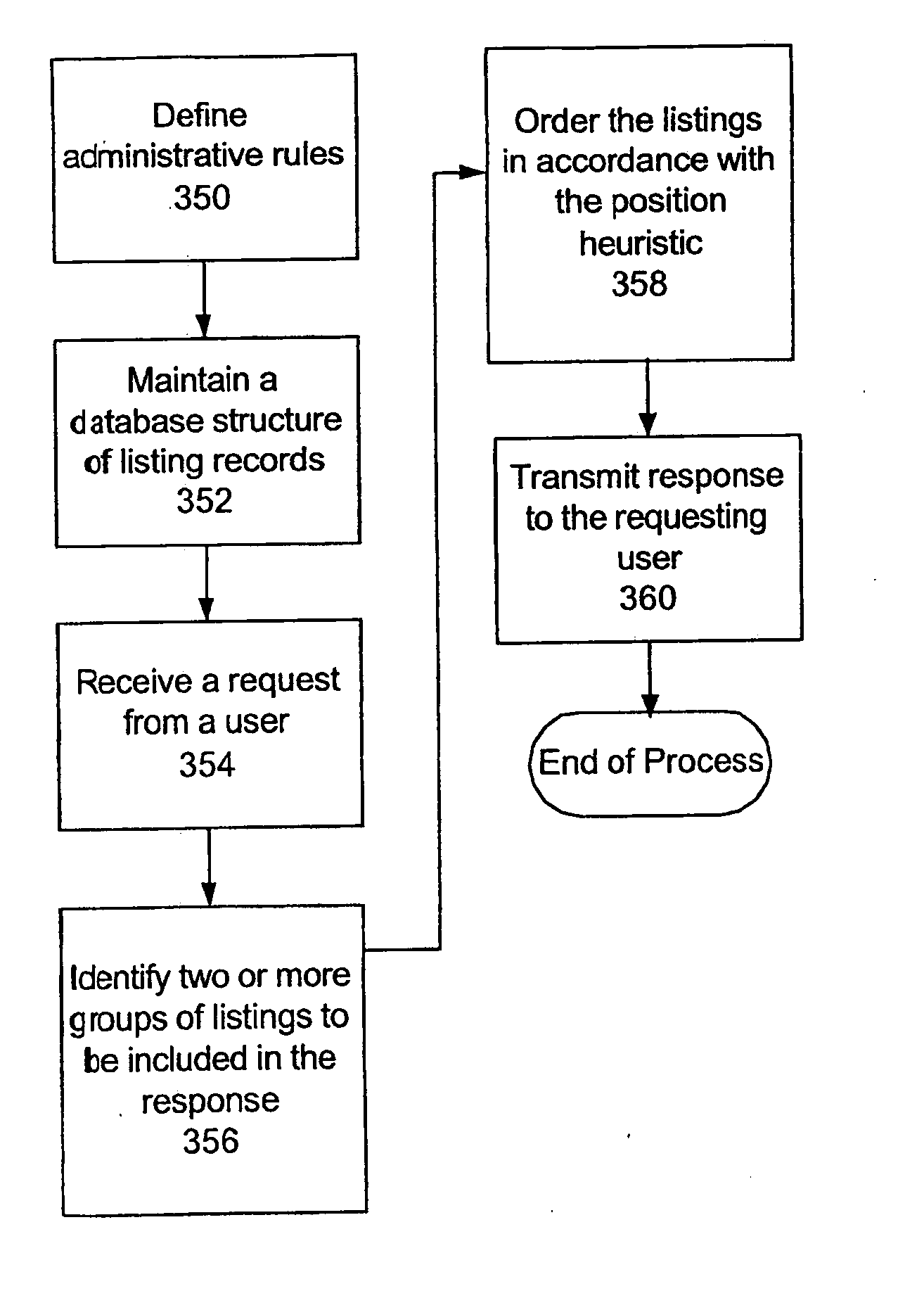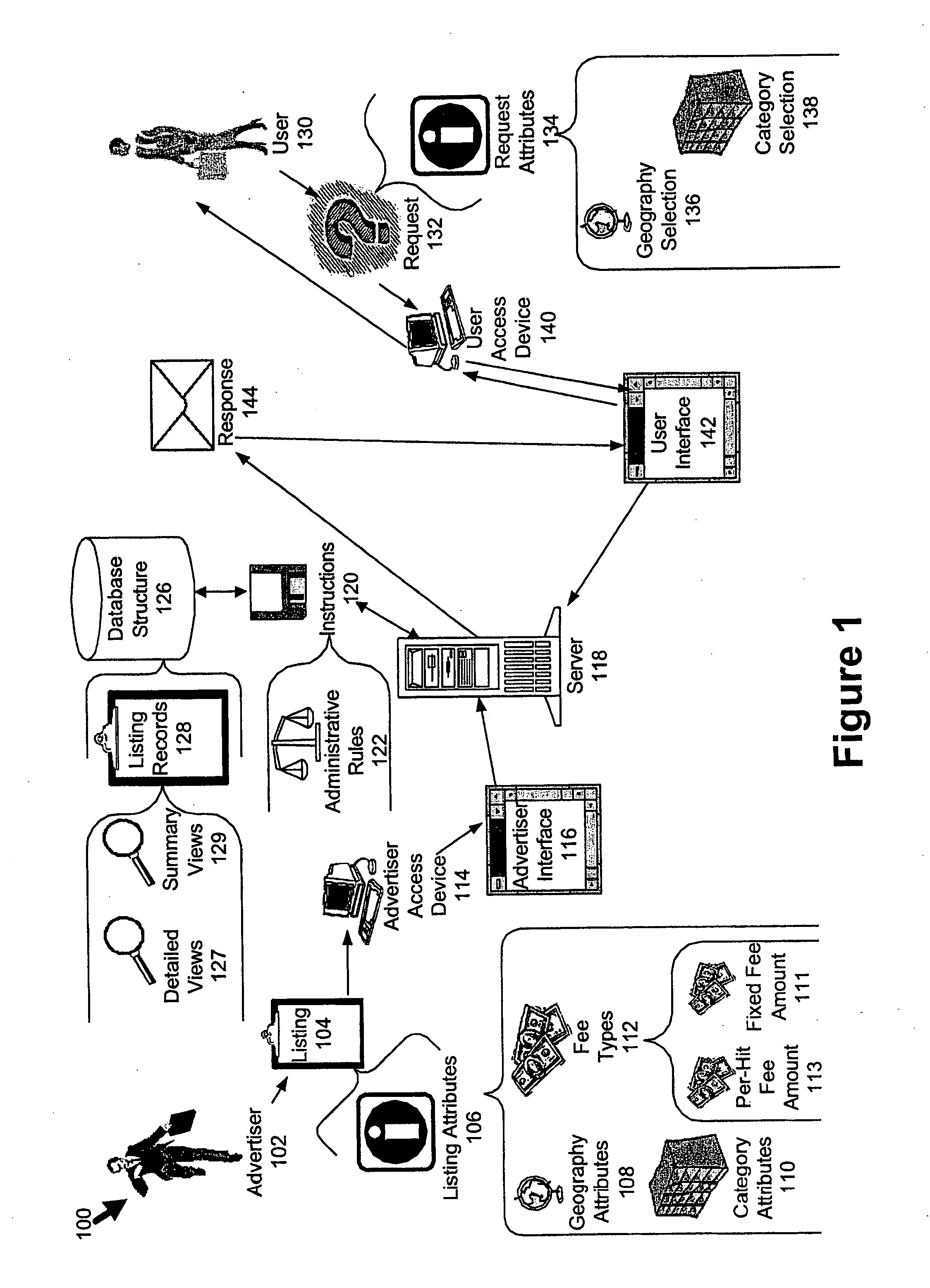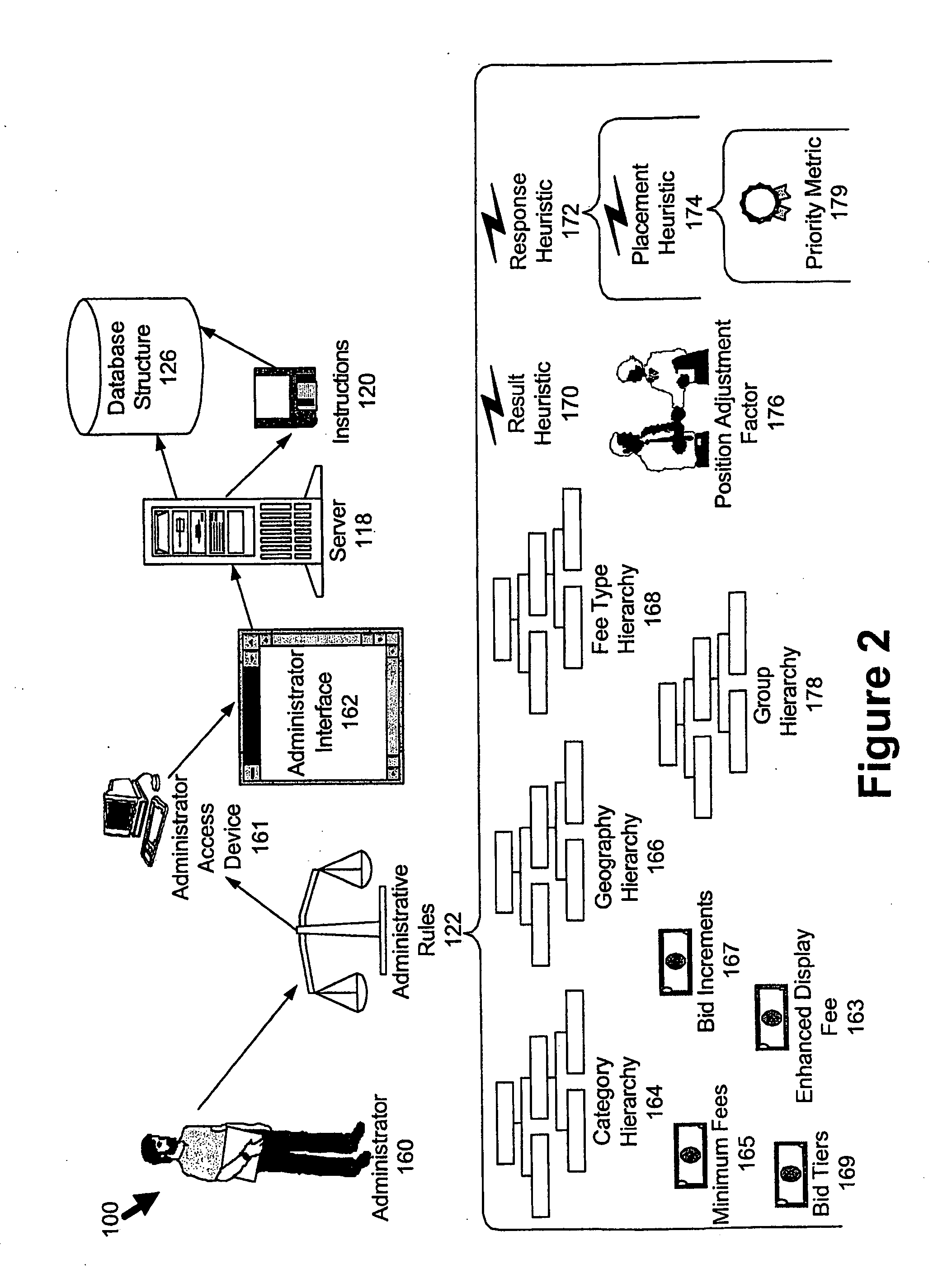Information distribution system
a technology of information distribution and information distribution, applied in the field of information distribution system, can solve the problems of inability to update the phone book listings, the phone book is not specifically tailored, and the phone book suffers from various flaws and limitations intrinsic to “hard copy” documents, so as to achieve effective “focus” advertising and facilitate and improve the effect of potential customers
- Summary
- Abstract
- Description
- Claims
- Application Information
AI Technical Summary
Benefits of technology
Problems solved by technology
Method used
Image
Examples
example b
b. EXAMPLE B
[0438]
DisplayPer-HitEnhancedPriorityPositionFixedAdvertiserOrder (Group)Fee AmountDisplay FeeMetric ValueAdjustment FactorFeeN11$0.40$0.005010$0N22$0.45$0.00450$0N33$0.35$0.00449$0L11$0.39$0.00390$0L22$0.35$0.00350$0L33$0.40$0.00400$0L44$0.28$0.00280$0L55$0.30$0.00250$0P11$0.00$0.001010$100P22$0.00$0.00155$100
[0439] EXAMPLE B illustrates how the position adjustment factor 176 can increase the value of the priority metric 179 such that listings 104 associated with lower per-hit fees 113 can end up with more desirable positions within the sequence.
example c
C. EXAMPLE C
[0440]
DisplayPer-HitEnhancedPriorityPositionFixedAdvertiserOrder (Group)Fee AmountDisplay FeeMetric ValueAdjustment FactorFeeN11$0.40$0.005010$0N22$0.45$0.104510$0N33$0.35$0.00350$0L11$0.39$0.00390$0L22$0.35$0.00350$0L33$0.10$0.004030$0L44$0.28$0.00280$0L55$0.30$0.05250$0P11$0.00$0.001010$100P22$0.00$0.0055$100
[0441] Example C illustrates an example that includes both enhanced display fees 163 and position adjustment factors 176. As illustrated in the example, these two attributes can offset each other to some extent.
example d
d. EXAMPLE D
[0442]
DisplayPer-HitEnhancedPriorityPositionFixedAdvertiserOrder (Group)Fee AmountDisplay FeeMetric ValueAdjustment FactorFeeN11 or 2$0.19$0.00200$0N21 or 2$0.13$0.00200$0N33$0.07$0.00100$0L11$0.39$0.00390$0L22$0.35$0.00350$0L33$0.10$0.004030$0L44$0.28$0.00280$0L55$0.30$0.05250$0P11$0.00$0.001010$100P22$0.00$0.0055$100
[0443] Example D illustrates an example that includes bid tiers 169 for the national advertisers 102. Bids from $0.01 through $0.10 belong to same tier. Bids $0.11 through $0.20 belong to the same tier, and so on and so forth. Within a bid tier 169, each listing 104 has the same priority metric 179.
PUM
 Login to View More
Login to View More Abstract
Description
Claims
Application Information
 Login to View More
Login to View More - R&D
- Intellectual Property
- Life Sciences
- Materials
- Tech Scout
- Unparalleled Data Quality
- Higher Quality Content
- 60% Fewer Hallucinations
Browse by: Latest US Patents, China's latest patents, Technical Efficacy Thesaurus, Application Domain, Technology Topic, Popular Technical Reports.
© 2025 PatSnap. All rights reserved.Legal|Privacy policy|Modern Slavery Act Transparency Statement|Sitemap|About US| Contact US: help@patsnap.com



